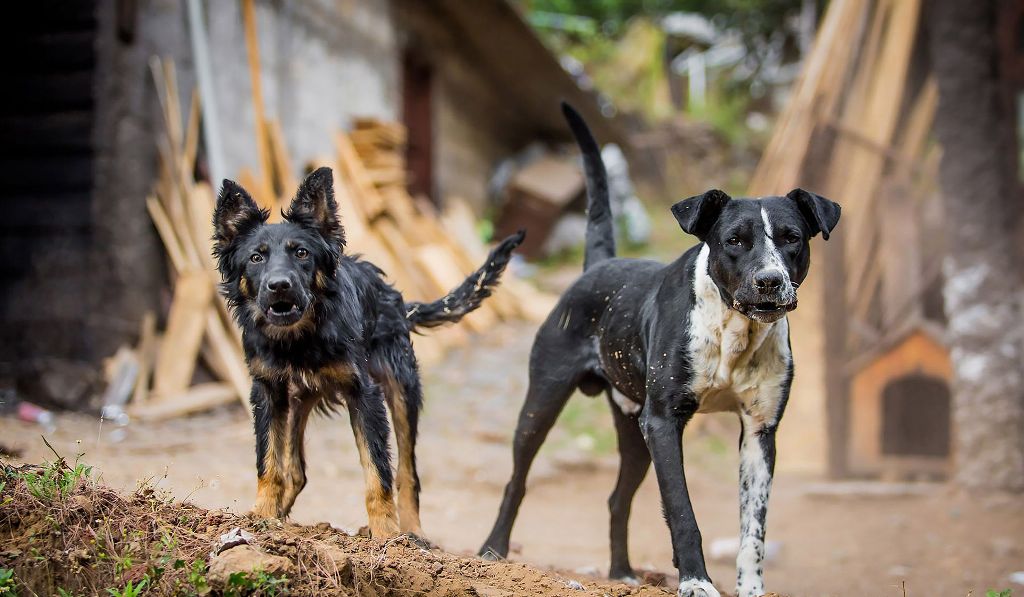Even a friendly dog can turn into an aggressive beast in the wrong circumstances, so it is best to know how to stop aggressive dogs behavior before irreversible harm is done. Aggression in a dog won’t go away overnight even in dog friendly cottages, but with a hefty dose of patience and the right plan, you can turn an aggressive dog into a happy, confident dog that won’t attack out of the blue.
What Makes Dogs Aggressive?
Before trying to tackle aggression in a dog, you need to understand the causes of this aggression. Some reasons might be straightforward, like territorial aggression, when a dog is aggressive towards strangers to guard its territory and possessions. Other causes are not that obvious, like a hidden illness that causes pain, anxiety, or frustration.
If left unaddressed, aggression in dogs can have deadly consequences. It is estimated that dogs bite 4.7 million adults and children in the United States every single year, with children aged 5 to 9 being the most likely to sustain a dog bite injury (Source: https://onmyside.com/areas-we-serve/lafayette-la/dog-bite-lawyer/)
The top causes of dog aggression include:
Fear & anxiety:
An anxious dog is more likely to growl, snap, lunge, and even viciously attack other dogs, objects, and people to defend themselves. Fear is the number one reason many small dogs develop the so-called small dog syndrome, which includes many bad behaviors that would be socially unacceptable in larger breeds. Dogs become anxious if they were abused/ neglected or if they weren’t properly socialized as pups.
Injury/ Illness:
A dog that is in pain will be aggressive when you are trying too close to it regardless of size. Some illnesses and injuries can cause a lot of pain and are not that obvious, like concussions, arthritis, broken bones, and cancer. Other illnesses may not cause pain, but they might affect the dog’s cognitive function, such as age-related brain disease and tumors. Diseases and injuries are very likely behind aggressive behavior in a dog if the behavior change is sudden and unexpected.
Frustration:
A frustrated dog will become aggressive if the cause of frustration is not addressed. The dog might not like it when it is confined in one place, or it might want to get to something, and there’s an obstacle between the dog and the desired object or person. Frustration affects mostly dogs who spend a lot of time on a leash or tied up.
Possessiveness:
If a dog feels like its beloved possessions, including its owner, are in danger, it will become aggressive to guard those possessions. Possessiveness is the number one reason dogs bite strangers who get into their yards or homes.
Dominant behavior:
A dominant dog is not born this way. It needs to display its dominance towards other dogs or people constantly to consolidate its place in the hierarchy of a pack. A dominant dog will also get access to the best mates, which is why two male dogs or two female dogs might become aggressive towards one another.
How to Stop Aggressive Behavior in Dogs
After identifying the correct cause of aggression in a dog, you’ll need a plan. The best course of action when training an aggressive dog is positive reinforcement. If you resort to punishment, the dog might get worse.
For instance, a dog growls to show people or other dogs around it that it feels uncomfortable around those people or dogs. If you punish the dog for growling, it might snap at some point and attack without this precious warning.
Another course of action is to desensitize your dog to the triggers that cause it to be aggressive. For example, a dog might become aggressive when it sees nail clippers as it associates the object with a past, unpleasant experience. You’ll need to use treats and words of praise whenever the dog is around a pair of nail clippers and doesn’t react aggressively. The same goes for strangers, other pets, moving objects, and situations.
You need to teach your dog that a specific trigger equals treats, your attention, or other desired behavior to make it compliant.
If the aggression is triggered by illness or injuries, you need to talk to a veterinarian immediately. Most of the time, pain medication doesn’t solve the problem. Also, if no health problem causes the bad behavior, and your attempts to calm your dog down don’t seem to work, you better call a professional.
A dog trainer or behaviorist will be able to correctly pinpoint the exact cause of the aggression (sometimes frustration can be mistaken for anxiety and vice versa) and come up with the right plan.
⚠ Article Disclaimer
The above article is sponsored content any opinions expressed in this article are those of the author and not necessarily reflect the views of CTN News






